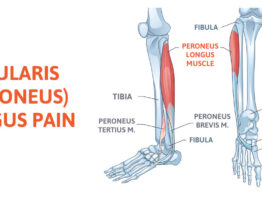
So, you’ve been told you’re a diabetic, and the first thing that enters your mind is the possibility of an amputation. Wow, a scary thought! I want to show you how this can happen. As a diabetic you need to hear this, to arm yourself with knowledge. I’m alarmed at how few people truly understand how the process leading to amputation gets started. In some situations it may not be as much of a worry as it should be, and in others it may be far greater than it needs to be.
So here we go! Here are three basic principles that set a foot up for an amputation:
-
Foot structure
Any type of foot deformity that would create a greater probability of a skin irritation can be problematic. Examples of this would be a bunion. This is that prominence by the big toe joint that you’ll notice when the big toe starts to drift towards the second toe. That bone that protrudes can make it a potential for skin irritation.
A hammertoe would be another example. In this situation the toe is bent so that the knuckle on the top of the toe may rub against shoe gear or the tip may develop a sore, as you tend to walk on the tip and not on the fatty pulp that lies on the opposite side of the toenail. Any of these types of abnormalities should be addressed by appropriate shoe gear or, in some cases, by corrective surgery.
-
Blood flow
You have probably heard that because of lack of blood flow diabetics have amputations. In my practice experience this appears overrated. Many diabetics have adequate blood flow for healing. I think it’s important if you’re diabetic to really have a thorough exam so you know specifically how you rate. This is a perfect situation of one size doesn’t fit all.
But, obviously, if circulation is an issue then healing of any type of sore or cut may become an issue. One of the worse things you can do is smoke. Obviously the smoking habit has a detrimental effect on circulation, but when you combine it with diabetes, the risk goes up by a factor of at least three times.
-
Neuropathy
This is what I consider the most dangerous factor: the health of your nerves. Neuropathy will occur in 50-70 percent of diabetics, but how severe it may become varies. Patients may feel a burning tingling and numbness in the feet and legs. The danger, however, is present when more numbness is present. It’s the inability to feel that is dangerous. The good news is that we can help restore the feeling with surgical decompression of selective nerve tunnels using laser and CETS technology to revitalize your nerves. Please refer to our website videos for more information.
Consider this the triad of things to ponder when you’re told you are diabetic and you’re worried about that dreaded word: amputation. The purpose of this blog was not to scare you, but rather give you some peace of mind. You may have more control than you realize, and you need to carefully consider each of these three areas.
First, a few questions you will need to consider are: if you have a deformity does it have to be corrected to reduce risk of amputation in the future, or are there conservative things that may be done? Or, if you have poor blood flow what are steps you can do, and what can a doctor do to help?
Next, if you smoke consider quitting.
Finally, the subject of neuropathy, which to me is most promising! We have surgical and non- surgical options that are backed up with objective research to measure improvement of nerve function. What I consider the most dangerous of the three has the greatest opportunity for help.
So, arming you with knowledge should empower you to consider these factors, and help you to understand you may have more options to avoid amputation.
I hope you better understand that there is more hope than ever for you to do something to preserve those precious feet.









Write a comment: